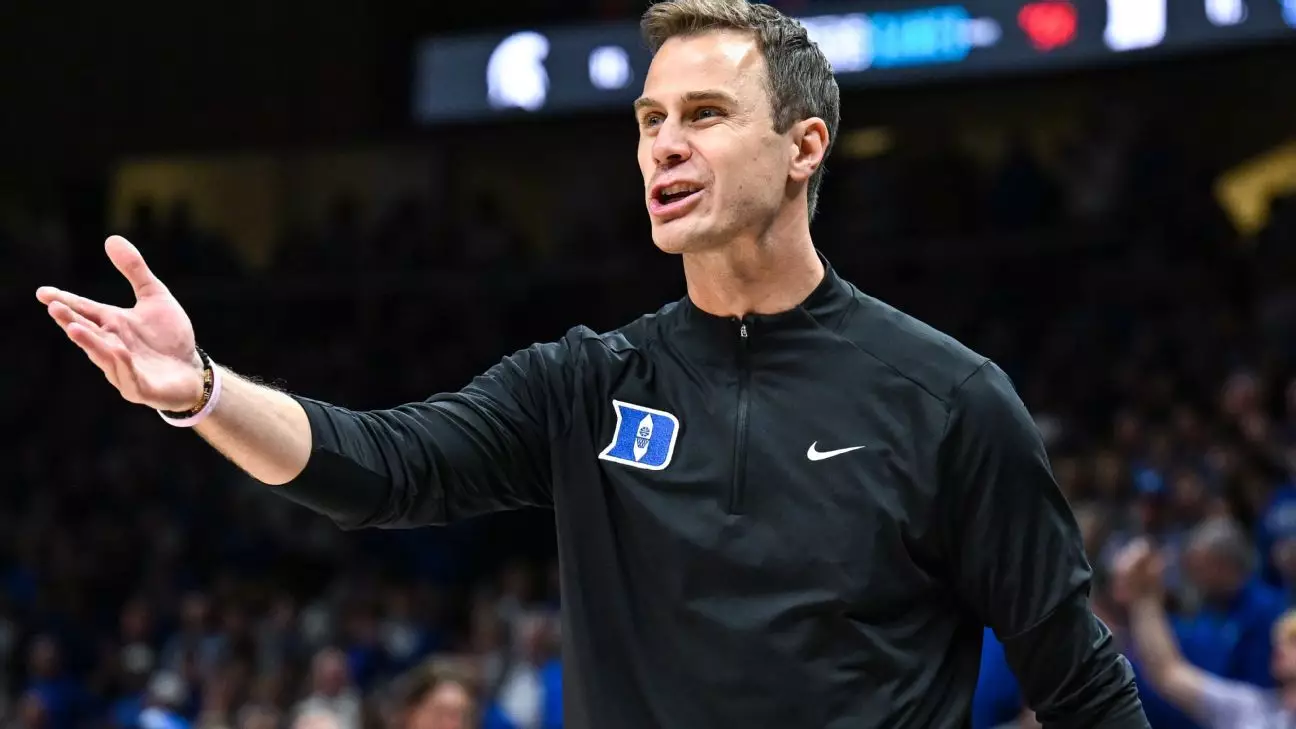The challenges facing collegiate basketball teams often extend beyond the court itself. With the Duke Blue Devils experiencing a series of unfortunate incidents involving player cramping during critical games, Coach Jon Scheyer’s remarks about the recurring issue underline a profound concern about player health, endurance, and the implications that these factors may have on team performance.
In their most recent matchup against the Kentucky Wildcats, Duke’s performance was marred by the struggles of their star freshman center, Khaman Maluach. Limited by cramping issues in the latter half of the game, Maluach’s on-court contributions were hampered, ultimately contributing to a frustrating 77-72 defeat. Cramping not only affects individual performance but can also ripple through the entire team’s dynamics. A player exiting the game can disrupt rhythm, affect morale, and force adjustments in strategy, which can disadvantage a team, especially in high-pressure situations.
Another instance involved reserve guard Sion James, who left the game after sustaining a hard hit. Such injuries, coupled with cramping, raise alarms about the physical preparedness of the team. In basketball, where rapid bursts of movement and endurance are paramount, these physical setbacks can lead to critical losses.
Coach Scheyer’s statements following the game resonated with a mix of concern and urgency. He emphasized that many of his players are still adjusting to the rigors of collegiate basketball, indicating a possible need for better conditioning and training regimens. “Young bodies,” as he described them, require tailored management to help prevent issues like cramping, which can significantly affect long-term performance.
Scheyer’s candidness about needing to work closely with the team’s training staff hints at a strategic pivot; a commitment to enhancing physical preparedness and adapting training programs to accommodate the unique needs of his athletes. His dedication underscores the recognition that development in collegiate sports extends beyond skill enhancement and tactical execution—it incorporates health and endurance as fundamental components of a successful program.
Duke is not the first institution to face challenges regarding player health in college basketball. Historically, teams have encountered similar hurdles, particularly in high-stakes environments where the fatigue is palpable. Physical conditioning is paramount; players pushing their limits in intense competition must remain vigilant regarding hydration, nutrition, and rest, factors that are all-too-easily overlooked in a demanding academic and athletic environment.
Duke’s earlier game against Army offered a glimpse into this growing concern, as star freshman Cooper Flagg similarly encountered cramping issues. Scheyer’s frustration concerning these recurring problems reflects the larger narrative of struggle within college athletics: the balancing act of maintaining rigorous training while ensuring athletes’ health.
As Duke looks ahead, it’s imperative that they recalibrate their approach to player health management. Increasing focus on individualized care—including hydration strategies, nutrition plans, and tailored workout regimens—can help alleviate cramping issues. Furthermore, monitoring player workloads could provide a more sustainable path to maintaining peak performance throughout the season.
Collectively, the Blue Devils must also foster a culture that prioritizes health and well-being alongside competition. Athletes should feel empowered to communicate their physical states openly, ensuring that the team support systems are responsive and effective. As seen with Flagg’s remarkable game against Kentucky where he overcame earlier cramping, the potential for success remains bright when accompanied by comprehensive support.
While the immediate challenge of cramping issues poses obstacles for Duke basketball, it also presents an opportunity for growth. Ongoing dialogue about health practices, player conditioning, and strategic adjustments will be integral as the team strives to compete at the highest level while safeguarding its players’ health.


Leave a Reply